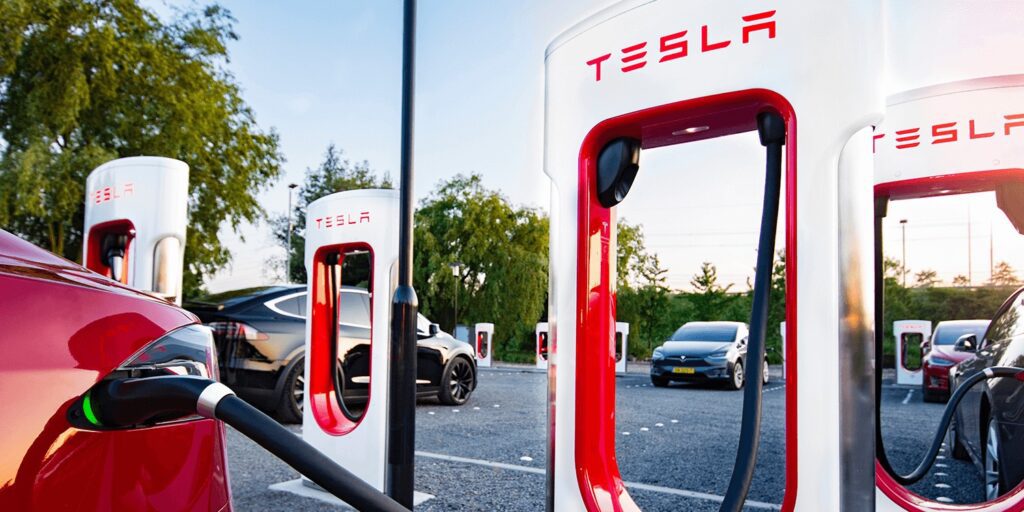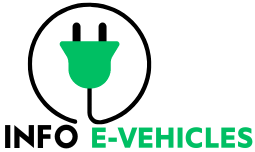Australia witnessed a groundbreaking surge in its Electric Vehicle Charging Infrastructure during the final quarter of 2023, with a remarkable focus on sustainability. This surge, primarily spearheaded by Tesla Supercharger V3 Network, has transformed the landscape of public charging for electric vehicles (EVs).


Revealing the Growth
In a comprehensive analysis presented in the Next System Report, it is revealed that Australia experienced an unprecedented addition of 50,500 kW of charging capacity during Q4 2023. This significant growth stands in stark contrast to the mere 13,600 kW added in the same period in 2022.
Tesla’s Dominance
A substantial 60% of this surge in capacity, amounting to 30,500 kW, can be attributed to the strategic expansion of Tesla’s Supercharger V3. The Driven’s report underscores the impact, detailing the establishment of 126 new Supercharger V3 sites, each capable of delivering up to 250 kW of power per vehicle.
Efficiency and Speed
Tesla’s foresight in introducing the V3 Superchargers in 2019 proves crucial. The system, designed to cut charging time by 50%, offers peak rates of up to 250 kW per car. A Tesla Model 3 Long Range, operating at peak efficiency, could recover an impressive 75 miles of charge in just five minutes.
Australia Market Dynamics
Surprisingly, despite holding a modest 10% market share based on the raw number of EV charging sites in Australia, Tesla excels in overall charging units and installed capacity. The Next System’s insightful report notes Tesla’s average of 5.9 chargers per site, more than three times the average of other networks.
Strategic Focus on Sustainability
Tesla’s success is not merely in numbers but in strategic planning. The focus on building EV charging locations that accommodate more vehicles and provide reliable rapid charging services sets Tesla apart in the broader landscape of electric mobility.
Conclusion
The surge in Australia’s electric vehicle charging capacity, prominently led by Tesla’s Supercharger V3 Network, marks a pivotal moment in the nation’s sustainable mobility transition. With technological advancements and strategic infrastructure planning, Australia is poised to play a leading role in the global shift towards electric transportation.
ALSO READ :-
Susanna Gideonsson Resigns Amidst Tesla Clash
Tesla Model 3 Deliveries in Australia’s Highlands Expected to Resume Within a Week
SOURCE : TESLARATI
FAQs
How does Tesla’s Supercharger V3 contribute to the growth of Australia’s electric vehicle charging network?
Tesla’s Supercharger V3 plays a pivotal role by adding an impressive 30,500 kW or 60% of all new capacity during the fourth quarter of 2023, as highlighted in the Next System Report.
What distinguishes Tesla’s Supercharger V3 from other charging networks in Australia?
Tesla not only holds a 10% market share based on the raw number of EV charging sites but also excels in total charging units and overall installed capacity. The average of 5.9 chargers per site is more than three times the average of other networks.
How efficient are Tesla’s Supercharger V3 stations in reducing charging time?
Introduced in 2019, the V3 Superchargers are designed to cut the time drivers spend at a Supercharger by 50%, with peak rates of up to 250 kW per car. This allows a Model 3 Long Range to recover up to 75 miles of charge in just five minutes.
What insights does the Next System Report provide regarding Australia’s EV charging landscape?
The Next System Report offers a comprehensive analysis, revealing a substantial addition of 50,500 kW of charging capacity in Q4 2023. This growth marks a significant shift from the 13,600 kW added in the same period in 2022.
Despite having a 10% market share, how does Tesla’s strategic focus impact the broader EV charging infrastructure in Australia?
Tesla’s strategic focus is evident in its emphasis on building EV charging locations that can accommodate more vehicles and provide reliable rapid charging services. This approach sets Tesla apart, showcasing a commitment to sustainable and efficient electric mobility.
